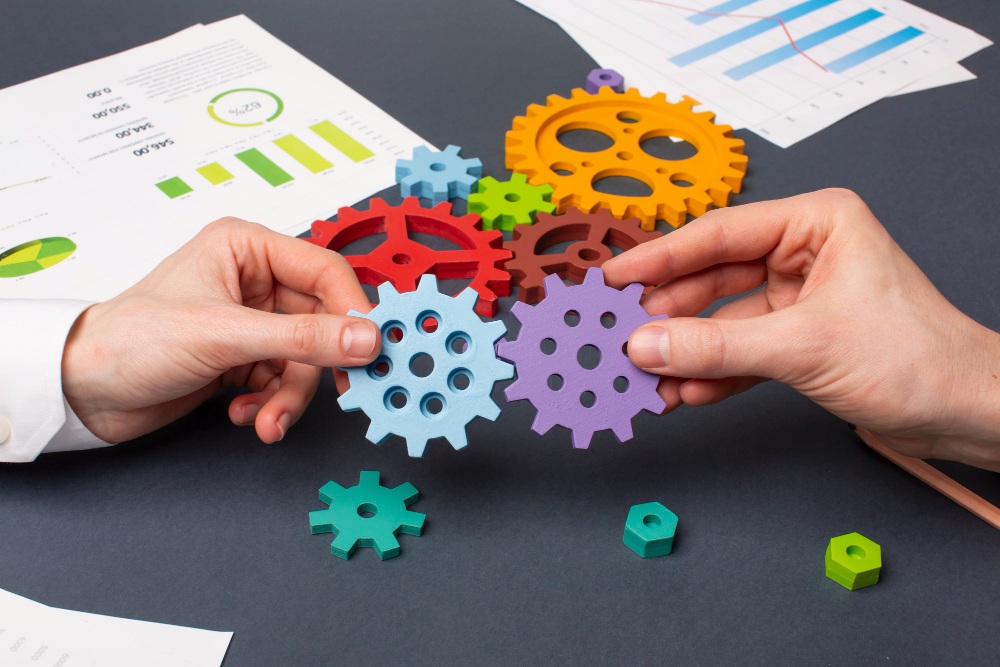Every organization aims to complete its projects efficiently, on time, and within budget — but without maintaining project quality, success can quickly lose meaning. Quality management ensures that every stage of a project meets defined standards, satisfies stakeholders, and delivers sustainable results.
As industries adopt AI-driven analytics, agile frameworks, and digital transformation, the role of project quality management has become even more vital in 2025.
What Is Project Quality Management?
Project quality management refers to the process of planning, controlling, and ensuring that a project’s deliverables meet both the client’s expectations and the organization’s internal standards. It involves three key components — quality planning, quality assurance, and quality control.
Together, these help project managers align outcomes with business goals while minimizing risks and rework.
For a deeper overview of project structures and responsibilities, you can explore our detailed guide on End-to-End Project Management.
Core Components of Project Quality Management
1. Quality Planning
This phase defines the standards and benchmarks your project must meet. It involves identifying key performance metrics, customer expectations, and compliance requirements.
For instance, a construction company might follow ISO 9001 standards, while a software firm could use Agile testing benchmarks. Setting these parameters early ensures consistency throughout the project lifecycle.
2. Quality Assurance (QA)

QA is the proactive process of implementing systems and audits to prevent errors before they happen. It’s about building the right processes rather than fixing mistakes later.
Many organizations use continuous improvement methods such as Six Sigma, Lean, or Total Quality Management (TQM) to enhance efficiency and minimize waste.
3. Quality Control (QC)
QC focuses on inspection, testing, and verifying results after tasks are completed. It identifies defects or deviations and ensures corrective measures are taken immediately.
Strong QC mechanisms not only maintain quality but also boost stakeholder satisfaction and brand credibility.
Why Quality Management Matters in Projects
Quality management plays a decisive role in maintaining project health. Here’s why it matters:
- Ensures consistent customer satisfaction through reliable outcomes
- Reduces project costs by minimizing rework and resource wastage
- Strengthens team collaboration and accountability
- Enhances organizational reputation and long-term trust
- Supports compliance with industry regulations and safety standards
Simply put, a project without quality is a promise without delivery.
Modern Trends in Project Quality Management (2025)
In 2025, the approach to quality management is rapidly evolving. Today’s project managers are integrating:
- AI-based performance tracking and predictive analytics
- Agile and hybrid methodologies for flexible execution
- Cloud-based project management tools for real-time collaboration
- Automated quality monitoring to ensure consistency across global teams
These trends help teams identify potential issues earlier and maintain efficiency even in complex, multi-stakeholder environments.
For better financial planning alongside quality, check our post on Project Management Budgeting Methods.
How to Implement Effective Quality Management
- Define clear objectives: Link quality standards directly to project goals.
- Engage stakeholders early: Gather input from clients, vendors, and team members.
- Use project management software: Tools like Asana, Jira, or Trello simplify QA tracking.
- Document everything: Maintain checklists, audits, and corrective actions.
- Review regularly: Conduct frequent evaluations to ensure continuous improvement.
These steps establish a culture of continuous improvement and accountability within the team.
Challenges in Maintaining Project Quality
Despite clear standards, maintaining quality isn’t easy. Common challenges include:

- Tight deadlines and limited budgets
- Poor communication between departments
- Inadequate risk analysis and unclear quality metrics
- Resistance to adopting new tools or processes
Effective risk management in projects can mitigate many of these issues, helping teams balance speed and precision.
External Quality Standards and Resources
Many global organizations rely on frameworks provided by:
- Project Management Institute (PMI) for methodology and certification
- American Society for Quality (ASQ) for professional standards and training
Referring to these authorities ensures your project aligns with international best practices.
FAQs
What are the main elements of project quality management?
The three main elements are quality planning, quality assurance, and quality control — together they ensure consistency and client satisfaction.
How does quality management benefit a project?
It reduces rework, lowers costs, improves productivity, and enhances stakeholder confidence in project outcomes.
What tools are best for quality management in 2025?
Modern teams rely on AI-driven dashboards, Agile tools, and platforms like Jira, ClickUp, and Smartsheet for tracking quality metrics.
Is quality management necessary for small projects?
Yes. Even small projects benefit from clear standards — it ensures efficiency, cost control, and professionalism.
Bottom Line
In 2025, project quality management isn’t just a technical process — it’s a strategic necessity. By integrating clear quality standards, leveraging technology, and fostering continuous improvement, organizations can deliver successful projects that meet both client expectations and business goals.
When executed effectively, quality management transforms projects from routine tasks into measurable success stories.

Daniel is a business writer focused on entrepreneurship, finance, and investment strategies. He shares practical insights to help professionals and business owners make informed decisions in a fast-changing market.